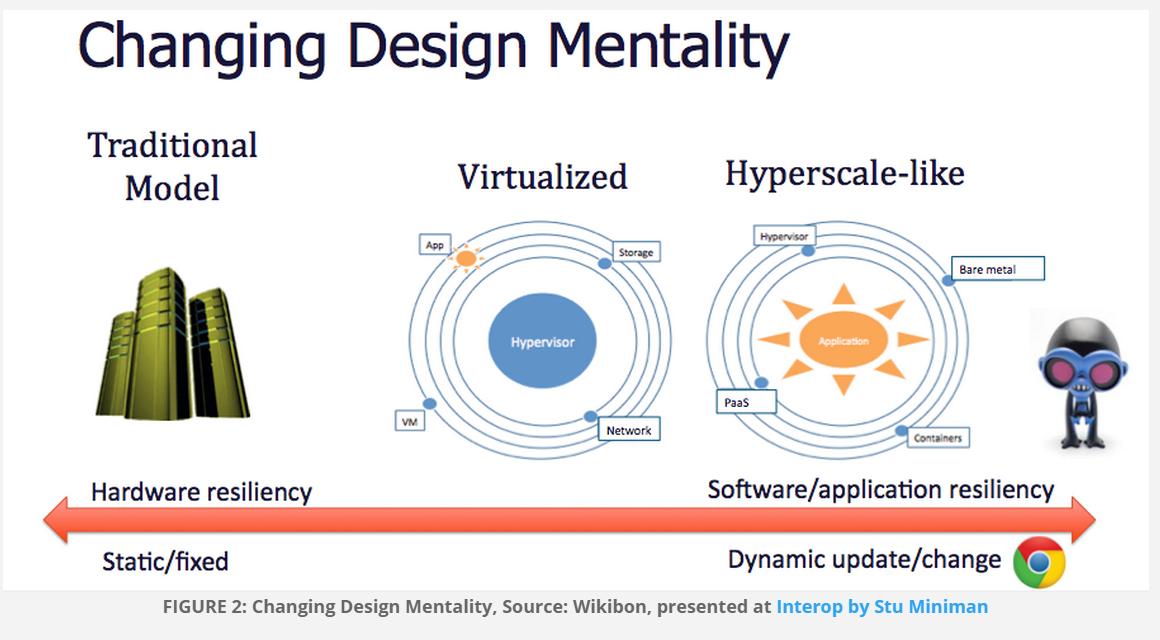 NEWS
NEWS
 NEWS
NEWS
 NEWS
NEWS
The Server SAN (storage-area network) architecture that Wikibon first described last year can greatly simplify the way infrastructure is purchased and managed, but it requires changes in the way IT thinks about technology budgeting and deployment that will be difficult for many organizations to manage, according to a new Wikibon reports.
Server SAN is a software-managed storage infrastructure concept that emerged in the hyper-scale infrastructures of giant born-in-the-cloud enterprises such as Facebook, Google and Amazon. These infrastructures demanded storage resourced that are simple to scale and manage. A primary aspect of Server SAN, writes Wikibon Analyst Stuart Miniman, is the breakdown of traditional IT silos as storage and compute are brought physically and architecturally close and managed as a software-led unit.
Hyper-converged infrastructure (HCI) is an early instance of Server SAN for use on-premise in businesses of all sizes. Its growth has exceeded Wikibon’s earlier forecasts by 20 percent, although both converged and HCI systems still represent a small part of the overall $1 trillion server and storage infrastructure market.
Converged and HCI vendors promise simpler installation and operation than traditional SANs but also reduce the amount of control the user has over the design and operations of infrastructure. This can be uncomfortable for IT organizations. Converged infrastructure products such as VCE’s Vblock and the NetApp/Cisco FlexPod have shown that integrated systems are faster to deploy and easier to manage compared to custom-configured infrastructure. Hyper-convergence shrinks the footprint of the units and increases the ease of scaling and managing the infrastructure.
HCI systems also are software-led, meaning that management is moved from the hardware pieces to a software layer that manages all IT resources as a single pool that can be scaled up or down as needed. This requires a shift in budgeting and purchasing, which today is typically organized according to the traditional IT infrastructure silos of storage, server and networking, Miniman writes. With the pool approach, resources can be allocated dynamically according to the demands of the applications, resulting in greater resource utilization, just as server virtualization has done. In most cases this results in overall savings on hardware acquisition and, since management is centralized, operations as well.
Miniman takes a close look at the hyper-converged leaders, starting with VMware, Inc. whose introduction of Virtual SAN (VSAN) last year was ”the single biggest event in the history of hyper-converged infrastructure.” Other vendors on his list include Nutanix, Inc., Hewlett Packard Co. with StorVirtual, VCE’s VxRack, SimpiVity, Inc., Scale Computing, Inc. and Dell, Inc.
Miniman concludes that Server SAN is “turning infrastructure into a platform that is appropriate for the full spectrum of applications,” whereas almost all applications running on HCI today are traditional software. The potential exists, however, to support a change in design mentality to one that supports more dynamic continuous development, such as the deployment of micro-services that support fast-changing business needs. Miniman recommends that IT organizations take advantage of HCI to simplify the ways in which they buy and manage infrastructure so they can focus on business needs. They should use the Server SAN concepts as a guide in discussing a roadmap to support the more flexible, constantly evolving IT environment of the future with vendors.
THANK YOU